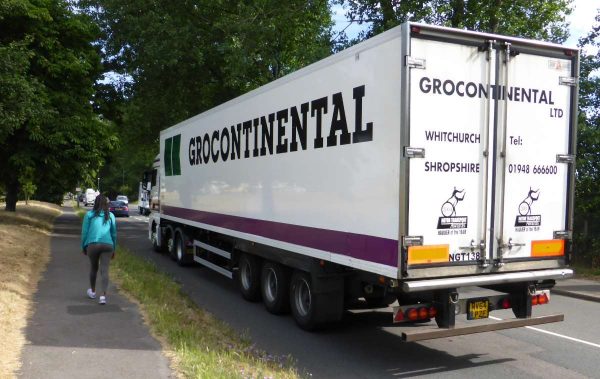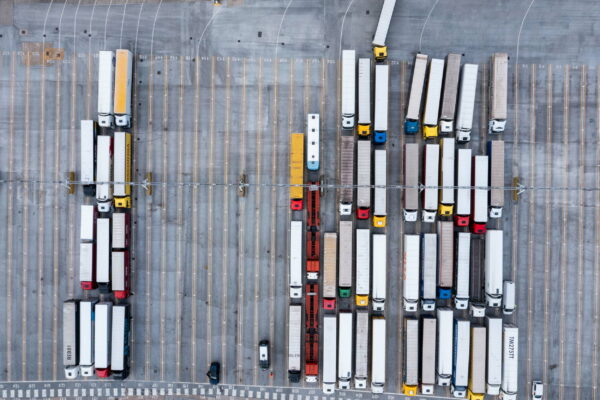What is an ‘artic’ or semitrailer?
An artic, or articulated lorry, is a tractor unit plus semitrailer – it has a permanent articulation point where the trailer is connected. There are other articulated vehicles such as some buses and earthmoving equipment, but the general term artic is used in the UK as the equivalent of what might be called a semitrailer in the USA or Australia.

The trailer is called a semitrailer because it doesn’t have wheels at the front, just landing legs to support it when it’s parked. A full trailer is self-supporting, whereas the front of the semitrailer rests on a fifth wheel or turntable. This is a greased plate that reduces the friction between the tractor unit and the trailer when it turns.
The semitrailer has a kingpin and skidplate. The kingpin locks in the fifth wheel and the skidplate sits on the fifth wheel. As long as the locking jaws are clamped firmly around the kingpin, the trailer is securely coupled.
Why use a semitrailer?
In the UK and Europe there are strict length and height limits. Semitrailers are relatively standardised and can be swapped between tractor units in a matter of minutes. Having a standard size means that cross-border transport is made easier.

Compared to using a rigid truck, a semitrailer can be dropped off fully loaded and a new one picked up. This leaves the loaders able to unload and reload the trailer without the driver losing time.
Compared to using a rigid truck plus trailer, the cargo length is longer which gives more flexibility.
A tractor unit has much more utility than a rigid truck; it can be used to pull any type of semitrailer, whether it’s a refrigerated hardside trailer, a tautliner/curtainsider, a flat deck transporter, skeletal trailer, etc. Tractor units can also tow full trailers if they have a bolt and pin coupling.
They are readily available on the secondhand market.
Articulated lorry dimensions
An articulated HGV (heavy goods vehicle) can be up to 16.5m, as standard, 16.65 if it’s carrying containers or swap bodies, or up to 18m if towing a low loader trailer. This is short compared to many other countries (New Zealand, for example, permits up to 19m), but is practical due to the UK and Europe’s narrow roads and city centres that were never designed for such long vehicles.
Truck and trailer combinations can be up to 18.75m.
The semitrailer itself can be 12m from the kingpin to the rear of the trailer. Tractor units in the UK are overwhelmingly cab-over versions, rather than the bonneted trucks that are common in the USA, Canada and Australia.
- Understanding the National Standards for Riding Mopeds and Motorcycles
- Livestock Transport Rules UK: A Complete Guide to Animal Transportation Requirements
- The Role of Safety Advisers in Dangerous Goods Transport
- Sustainable Driving: Reducing Your Environmental Impact on the Road
- Developing Effective Lesson Plans for Driver Training
- UK Agricultural Vehicle Registration and Tax Relief
- Challenges of Transporting Radioactive Materials (Class 7)
- Exemptions and support for Clean Air Zone charges
- Navigating Legal Requirements: The UK Motorcycle Licensing Rules
- Safe Transportation of Agricultural Chemicals and Hazardous Materials
- Innovations in Vehicle Construction for ADR Compliance
- Motorcycle Recovery Operations: How to Recovery a Broken Down Motorbike
- Alternative Fuels in Agricultural Vehicles
- Carriage of Dangerous Solids in Bulk Containers
- Understanding Limited Quantity Exemptions in ADR